
Sign in to your XDA account
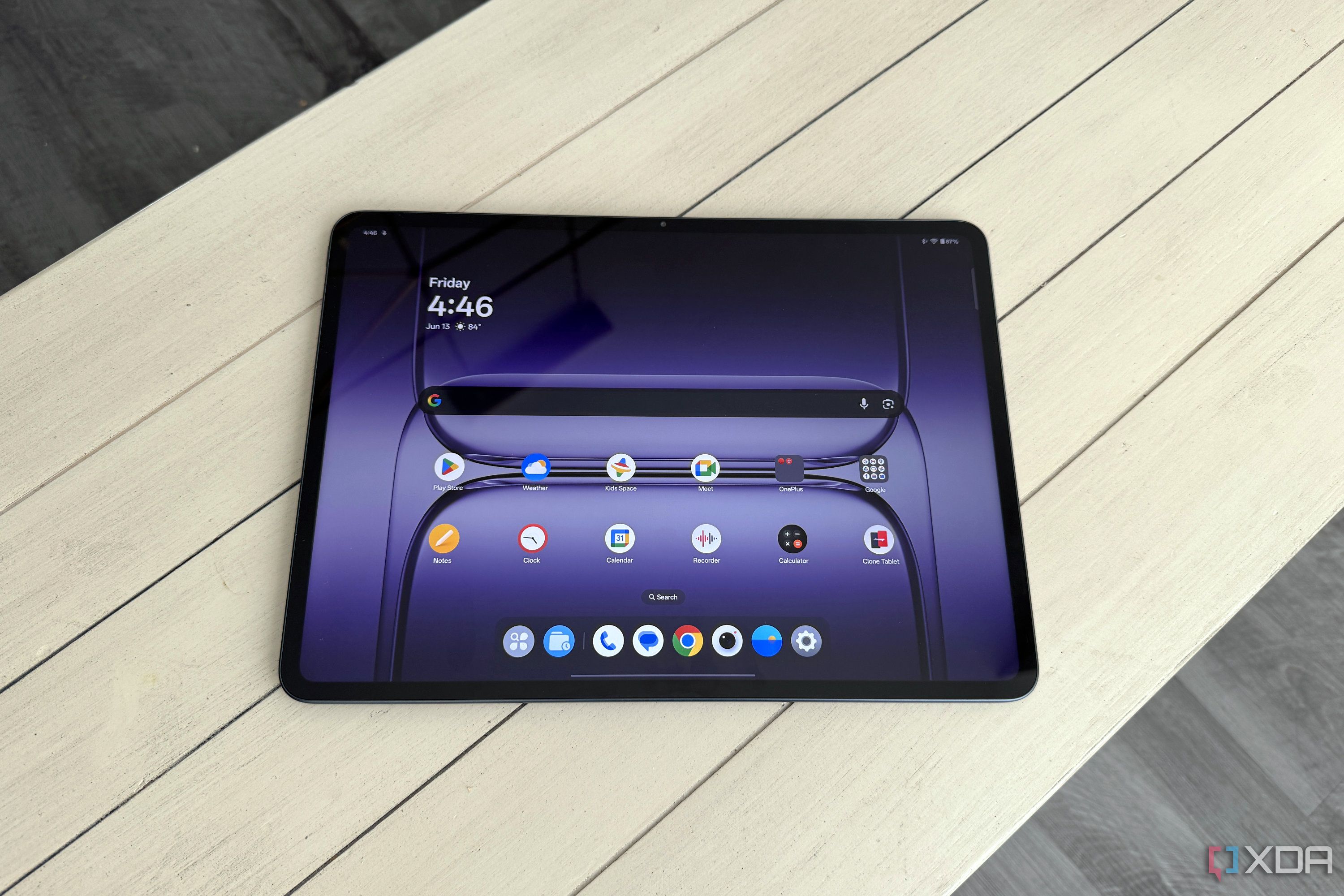
The tablet market is dominated by two brands, Apple and Samsung, with a few niche devices from other brands accounting for the remainder. However, the market position of the two giants has allowed them to increase prices without significantly improving the user experience. And that's left plenty of space for upstart OnePlus to bring its vision of what an Android tablet should be.
We're now on the third iteration of the OnePlus Pad, and if you take one thing away from this review, it should be this—this is the best Android tablet you can get, and it's significantly cheaper than the competition.
In a lot of ways, that shouldn't be surprising. OnePlus has the best window manager on the OnePlus Open, so being able to use it on a 13.2-inch screen only makes it better. It's lightweight, has excellent battery life, and the superb Snapdragon 8 Elite SoC provides it with more power than Android can fully utilize. It's also gorgeous, and I actively want to pick it up and use it, and what better praise can you give to a tablet?
About this review: OnePlus sent XDA the OnePlus Pad 3, Smart Keyboard, Folio Case, and Stylo 2. It had no input into the contents of this article, nor did it see any content before publication.
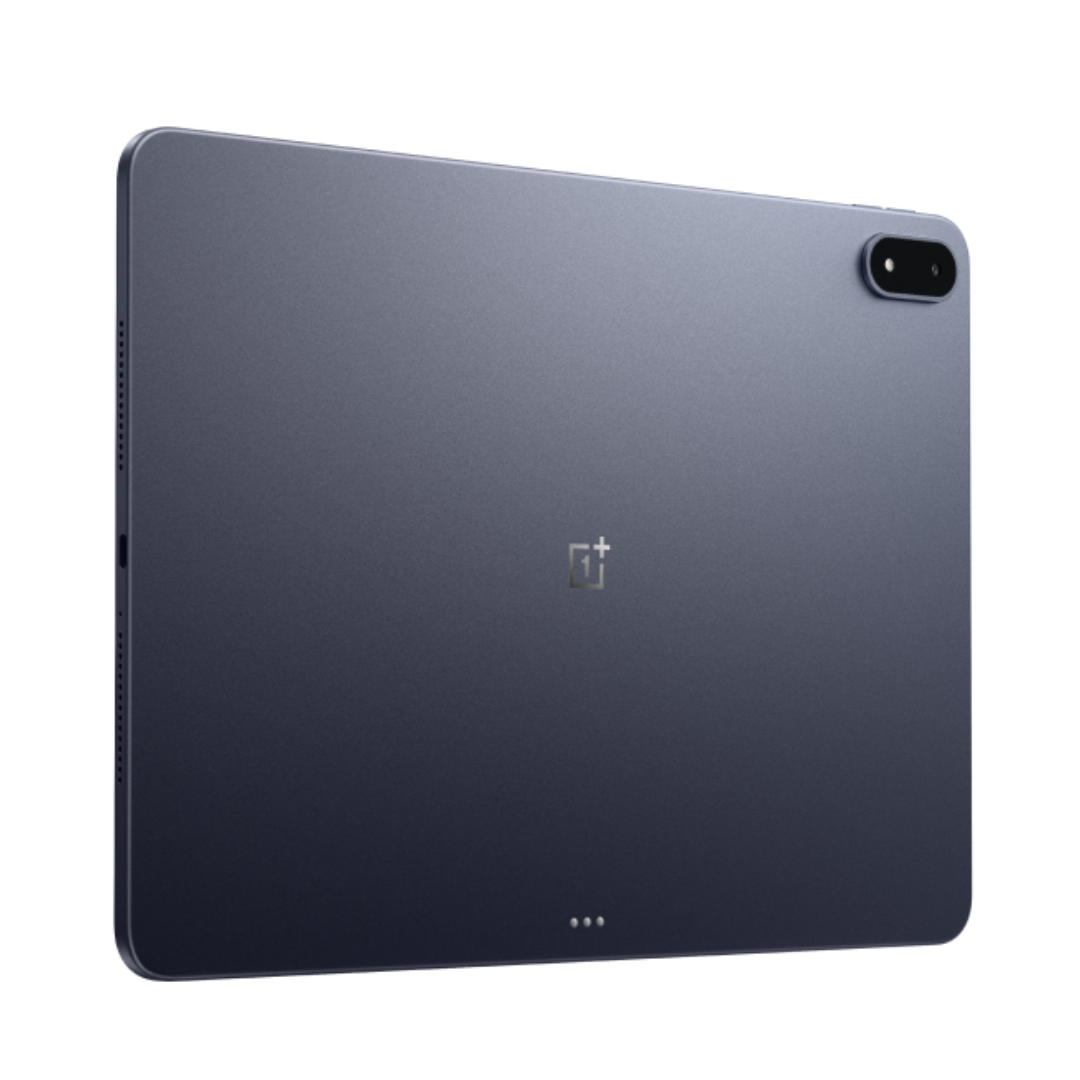
Storage 256GB UFS 4.0
CPU Snapdragon 8 Elite Mobile Platform
Memory 12GB LPDDR5x at 4266MHz
The OnePlus Pad 3 is a sleek, speedy slate powered by the superb Snapdragon 8 Elite SoC. The display is bright, beautiful, and has an adaptive 144Hz refresh rate for whatever content you use it for. It'd be nice to see storage tier options or a microSD card slot, but this is otherwise an immaculate Android tablet.
Pros & Cons
- Snapdragon 8 Elite SoC has tons of power
- Gorgeous high refresh-rate display
- The right price
- 13.2-inch screen is the only size option
- Keyboard cover could be more stable
- Desktop mode is still a little janky
Specs, availability, and price
The OnePlus Pad 3 is currently available to preorder from OnePlus' webstore, with an estimated shipping date of July 14. It has a $700 MSRP, comes in one configuration with 12GB of RAM and 256GB of storage, and is available in one color, Storm Blue.
As a preorder bonus, OnePlus is giving you the choice of two of three accessories for free: the $200 Smart Keyboard, the $50 Folio Case, or the $100 Stylo 2. That's a big incentive to order now, because the accessories are expensive on their own, and do add a ton of more utility to the tablet if you want to use it for productivity tasks.
Storage 256GB UFS 4.0
CPU Snapdragon 8 Elite Mobile Platform
Memory 12GB LPDDR5x at 4266MHz
Operating System Oxygen OS 15 based on Android 15
Battery 12,140 mAh
Ports USB-C
Camera (Rear, Front) 13MP, 8MP
Display type 13.2-inch LCD (LTPS), 7:5 ratio, 12bit color, 3392x2400, 315 PPI, up to 144Hz adaptive refresh, 600 nits (HBM 900 nits)
Price 700
Size 289.61x209.66x5.97mm
Connectivity Wi-Fi 7, Bluetooth 5.4 (SBC, AAC, aptX, aptX HD, LDAC, LHDC)
Headphone jack No
Colors Storm Blue
Build Aluminum unibody
Expandable Storage No
Weight 675g
Charging speed 80W SuperVOOC
Refresh rate 144Hz adaptive
This is one sleek slate
It's big and beautiful
Tablets often feature 16:10 aspect ratios to resemble laptops, or 4:3 aspect ratios to resemble the iPad. The OnePlus Pad 3 takes a different approach, featuring a 7:5 aspect ratio and a 13.2-inch screen with a lovely 144Hz adaptive refresh rate. That makes it somewhere between the two, and I find it more usable when used handheld. It also enhances vertical real estate when snapped onto the keyboard accessory for productivity work.
The aluminum unibody is gorgeous, as is the Storm Blue color, which looks different in almost every light or angle, making it challenging to capture accurately in photographs. Whatever you see in these images, it's much prettier IRL. And speaking of prettier things, the central camera wart from previous Pads is gone, with a normal camera bump in the top right corner.
It's also gorgeous, and I actively want to pick it up and use it, and what better praise can you give to a tablet?
Tablets have pretty much reached their peak in terms of thinness, and the 5.97mm of the OnePlus Pad 3 feels good in the hand. Not that you'd use it bare most of the time, with the folio case adding a few more mm, and the keyboard case almost doubling it. That also
The display is bright, has a 3,292 x 2,400 resolution, which means plenty of PPI, and has smooth scrolling thanks to the adaptive refresh rate. It's the first tablet I've put next to my iPad Pro and thought "wow," as many other displays just don't measure up. The speaker setup is fantastic, featuring four woofers and four tweeters that deliver a rich, tangible sound quality without distortion.
Plenty of performance
Flagship chip goes zoom
I'm not going to spend a vast amount of time on the processor, because everything with a Qualcomm Snapdragon Elite chip in it is going to be speedy. This is the 8 Elite, which isn't quite as powerful as the X Elites used in laptops, but it's not far off. With a generous 12GB of RAM, it has power to spare for anything you could conceivably use on an Android tablet.
everything with a Qualcomm Snapdragon Elite chip in it is going to be speedy
The only minor annoyance is that you're limited to 256GB of UFS 4.0 storage, with no microSD card slot available to increase that capacity. Unless you're a real power user, 256GB is probably enough, and if you offload files to cloud storage, it's workable. Android games can need a lot of storage space these days, and with the power of the Snapdragoin 8 Elite, you'll want to be playing games on this tablet, so it's a shame you can't install too many at a time.
OnePlus nails multitasking
OxygenOS 15 with Open Canvas is a productivity monster
Anyone buying a tablet this size is going to want to know about multitasking performance, because it's an excellent size for desktop tasks. I've used Samsung's window manager, and OnePlus' Open Canvas, and I much prefer the latter. I find it easier to arrange apps, and it's easy to drag and drop apps into my favored arrangement for work.
I loved Open Canvas on the OnePlus Open, and I love it even more with the amount of screen real estate on the OnePlus Pad 3. Split-screen works well, with plenty of viewable area, and having a third app hanging in overflow on the side (my usual is something to take notes on) makes it so I can work with the minimum of app-juggling.
I loved Open Canvas on the OnePlus Open, and I love it even more with the amount of screen real estate on the OnePlus Pad 3.
The OnePlus Pad 3 also has desktop mode when plugged into a USB-C compatible external display, and I found that worked smoothly, except it's not quite ready for release. The only dealbreaker I found was that the cursor is either on the tablet screen or the external display, and it won't transfer between the two as you would expect. OnePlus does say it's for preview, and will be an integrated feature of the next Android version, so I can only hope the minor issues get worked out.
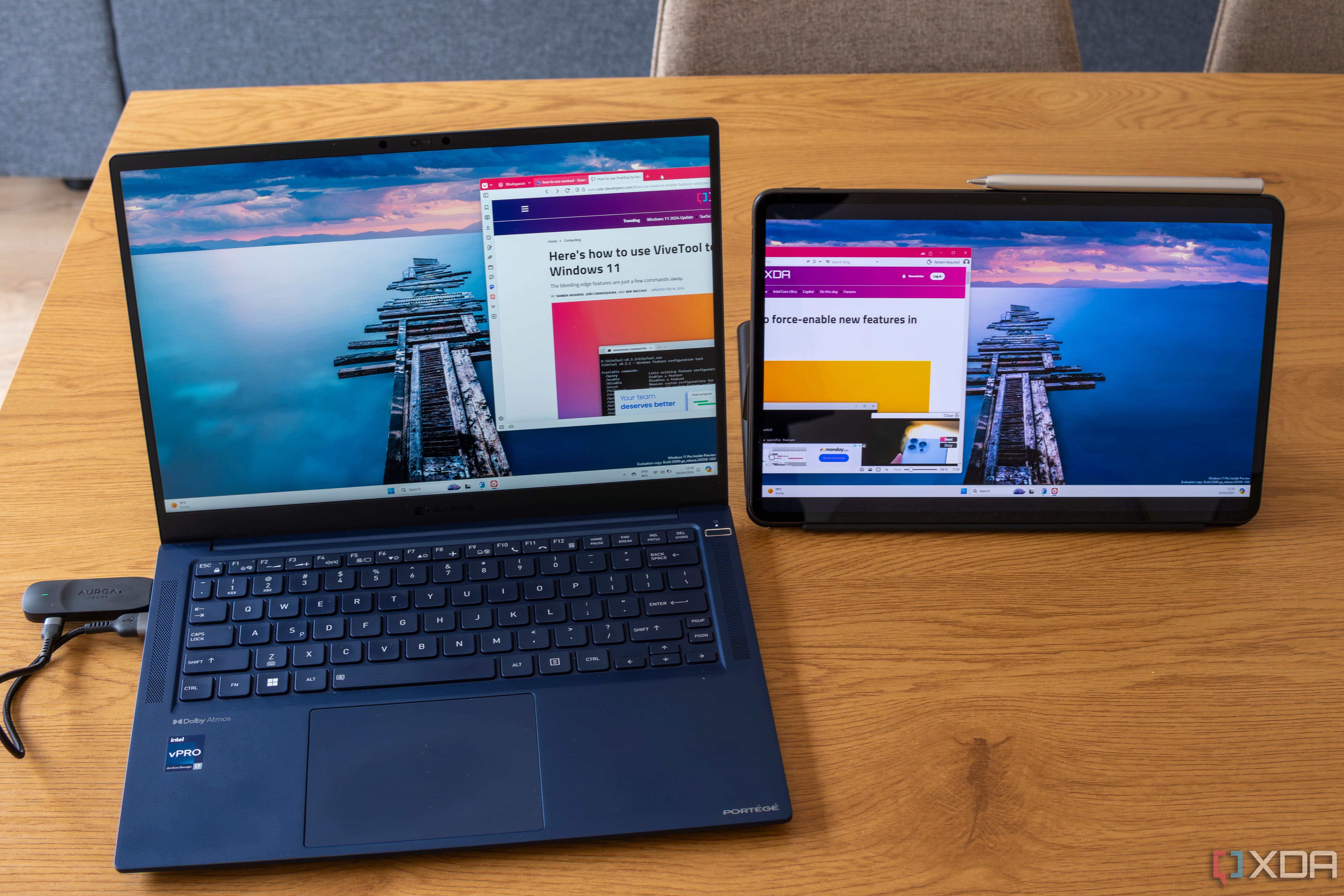
Related
6 ways to turn your tablet into the ultimate productivity tool for your PC
Have a tablet lying around that you want to repurpose as a productivity tool? Here are some apps to do exactly that.
Well-designed peripheral ecosystem
Android tablets lack the third-party accessory ecosystem that the iPad boasts, so it's up to device manufacturers to put out their best. The OnePlus Pad 3 features a new keyboard cover and folio, and utilizes the Stylio 2 pen from the previous model. They're all well-designed and feel premium.
What's new this generation is the ability to remove the keyboard and still use it, thanks to an integrated battery and Bluetooth. Before this, the keyboard only worked when it was attached to the pogo pins on the back of the Pad, which limited how you could use it. Now you can keep the tablet on the table and still type with the keyboard on your lap, which I found to be pretty effective.
What's new this generation is the ability to remove the keyboard and still use it, thanks to an integrated battery and Bluetooth
The ability to use the keyboard wirelessly also means you could use the folio case for propping up the tablet instead, which is slightly more stable than the kickstand on the keyboard's rear case.
I'm not entirely sure the $200 price tag for the keyboard is warranted, but it's half the price of the Surface Pro Flex, which has similar functionality, and less than the Magic Keyboard for iPad, so it's not overpriced, just expensive. The touchpad works well, and the NFC tag section on the bottom right corner enables easy sharing even with an iPhone, so it's got added value if that's something you'd use.
Should you buy the OnePlus Pad 3?
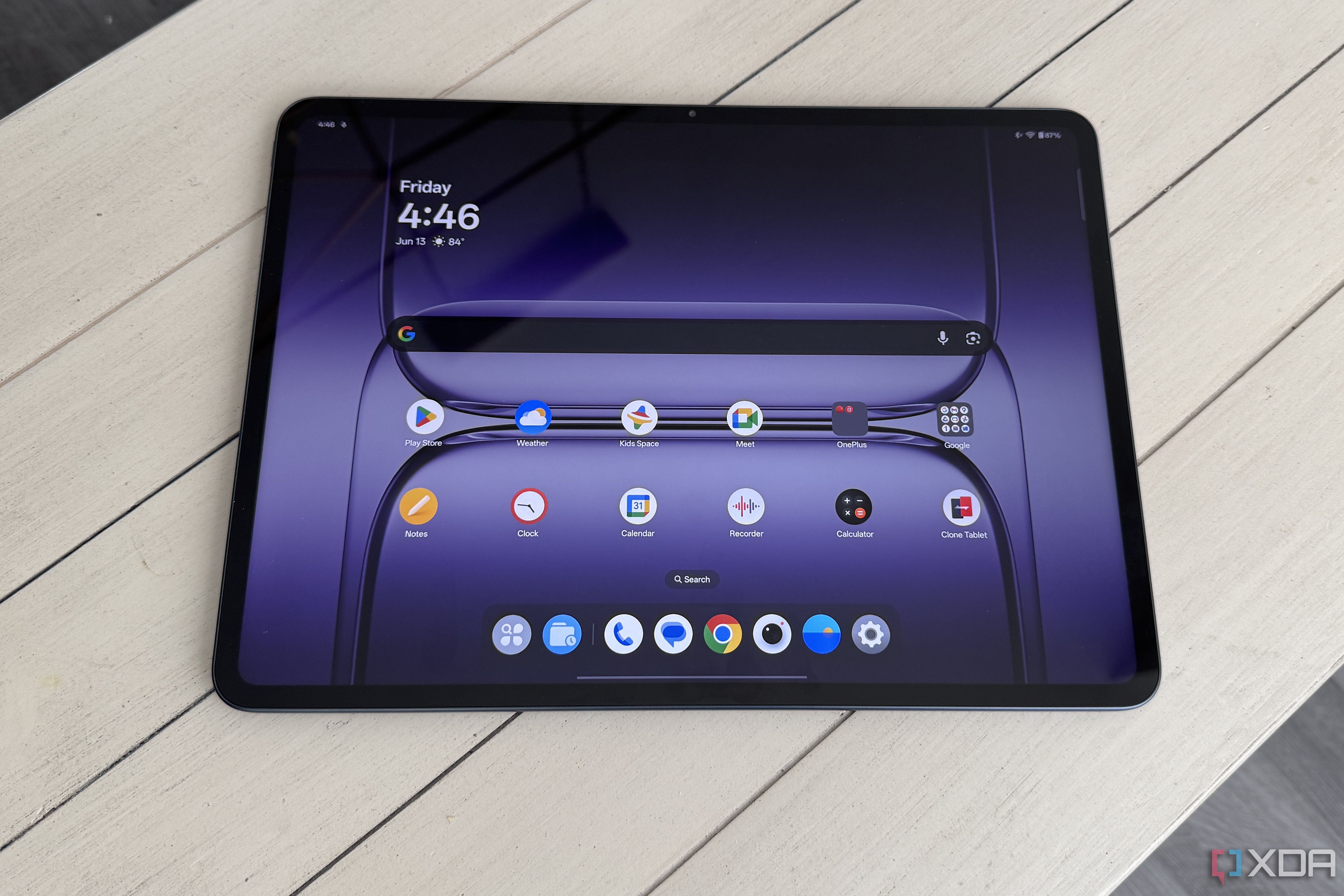
You should buy the OnePlus Pad 3 if:
- You want the best Android tablet available today
- You want something that will rival the iPad Pro
- You don't want to spend on Samsung
You should NOT buy the OnePlus Pad 3 if:
- You prefer a smaller tablet screen
- You need more than 256GB of onboard storage
- You are deeply entrenched in the Apple ecosystem
What OnePlus has managed with the Pad 3 is impressive. It's a large, gorgeous tablet with ample power and battery life, complemented by a decent accessory ecosystem. It's also significantly more affordable than the only real competition in the Android space, with Samsung's Galaxy Tab models costing several hundred dollars more for less performance.
So, one other question comes up. Is the OnePlus Pad 3 enough to challenge the iPad's dominance at the top? Not quite, but the gap isn't as large as you'd think, and the next generation might catch up completely. If you prefer Android devices, the OnePlus Pad 3 is an easy recommendation. The only time I wouldn't recommend it is if you prefer a smaller screen, because the 13.2-inch display is larger than you might expect. I'd love the OnePlus Pad 4 to offer two screen sizes, this, and a 7-inch model, where I think it'd easily take some market share away from the bigger players.

Storage 256GB UFS 4.0
CPU Snapdragon 8 Elite Mobile Platform
Memory 12GB LPDDR5x at 4266MHz
Operating System Oxygen OS 15 based on Android 15
.png)
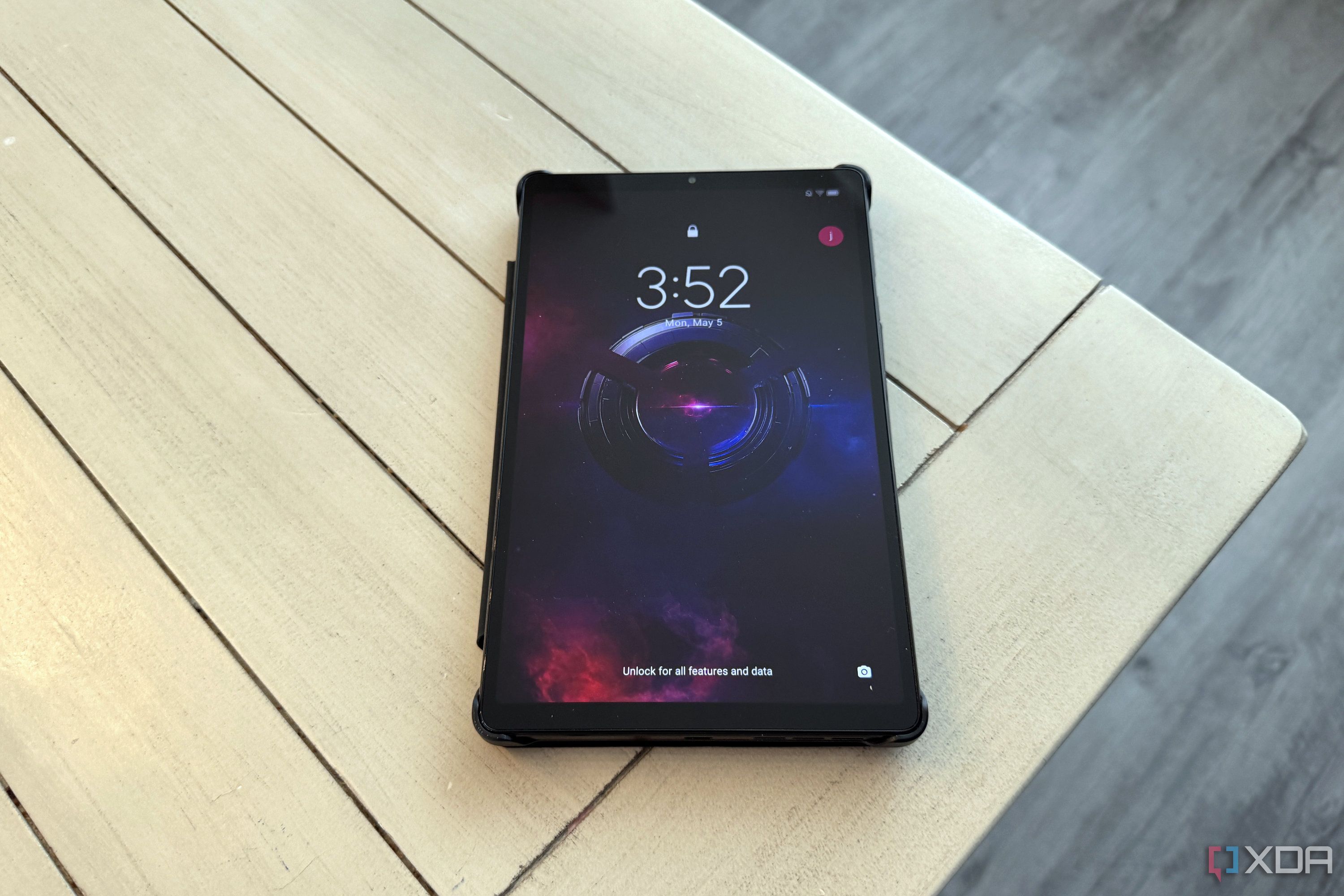
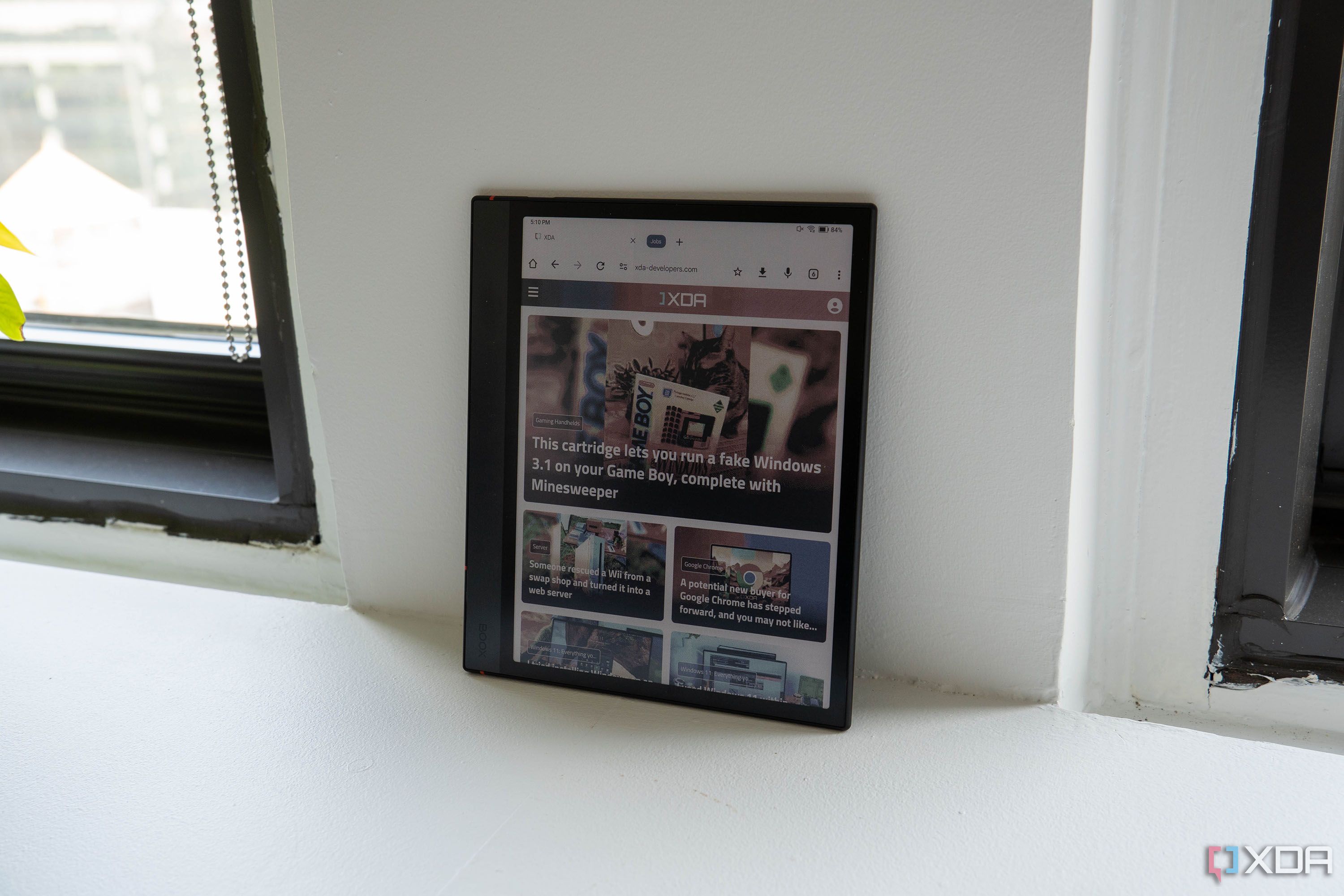
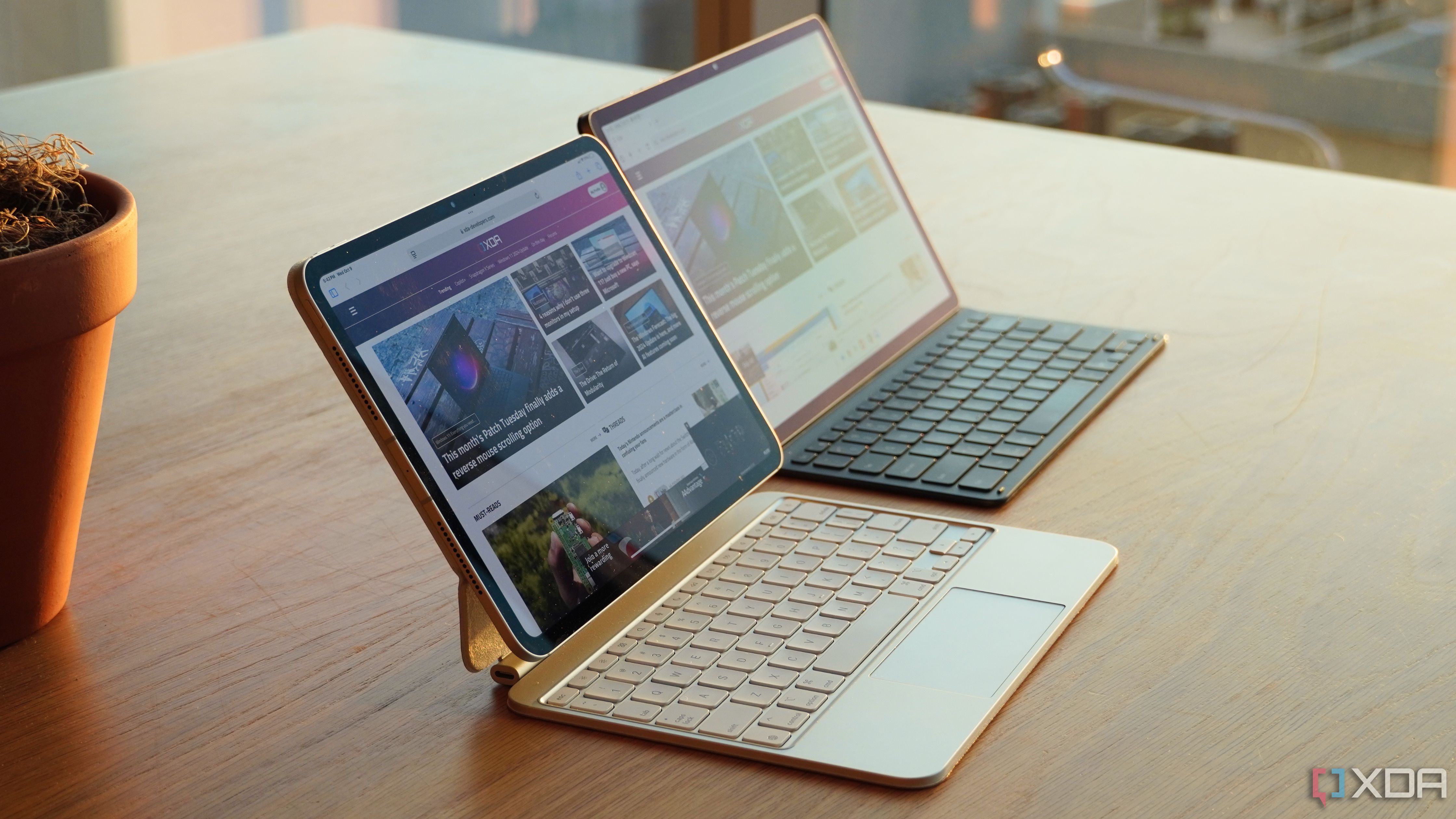

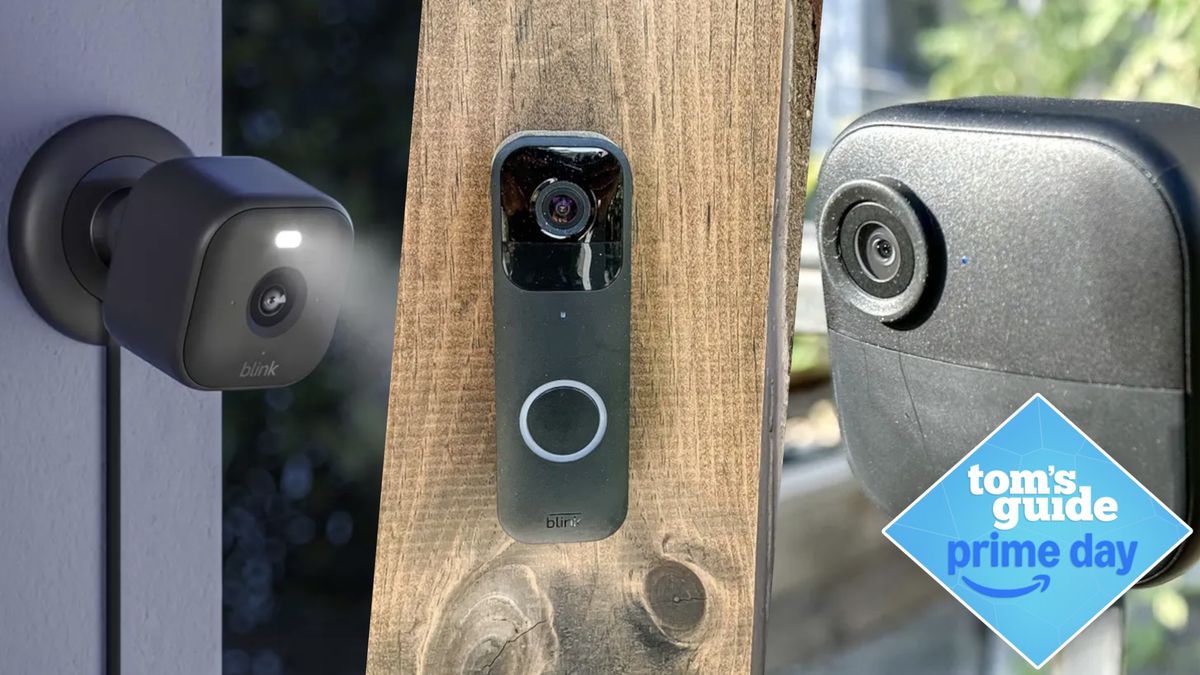

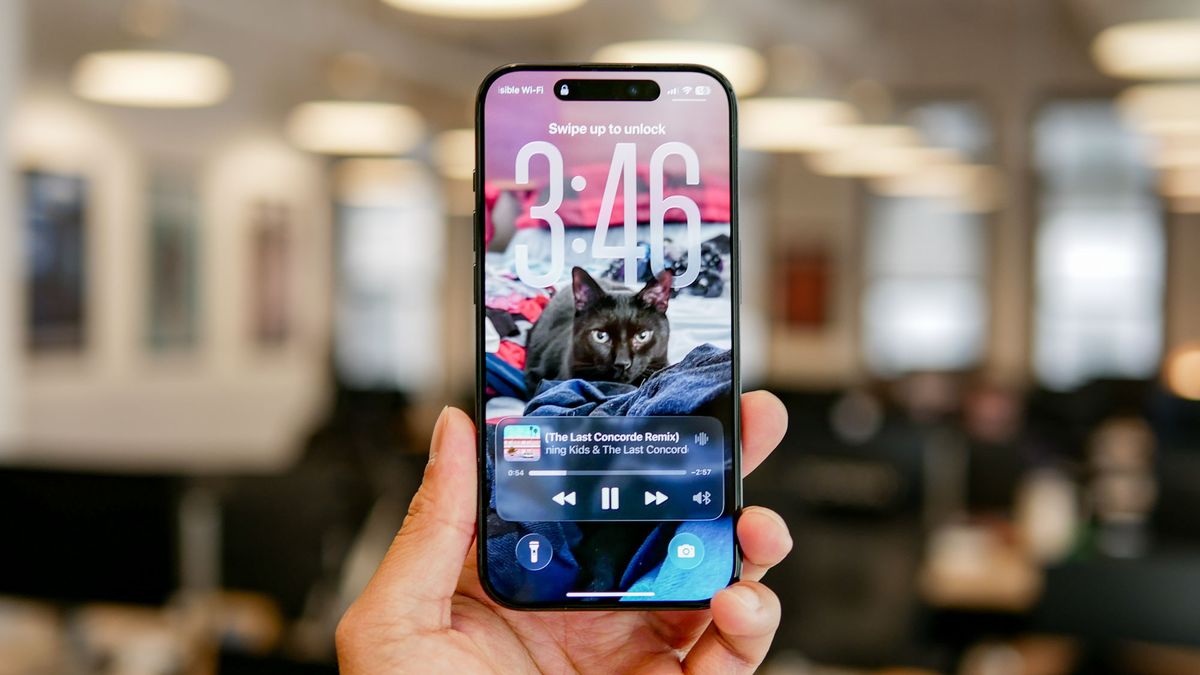







 English (US) ·
English (US) ·